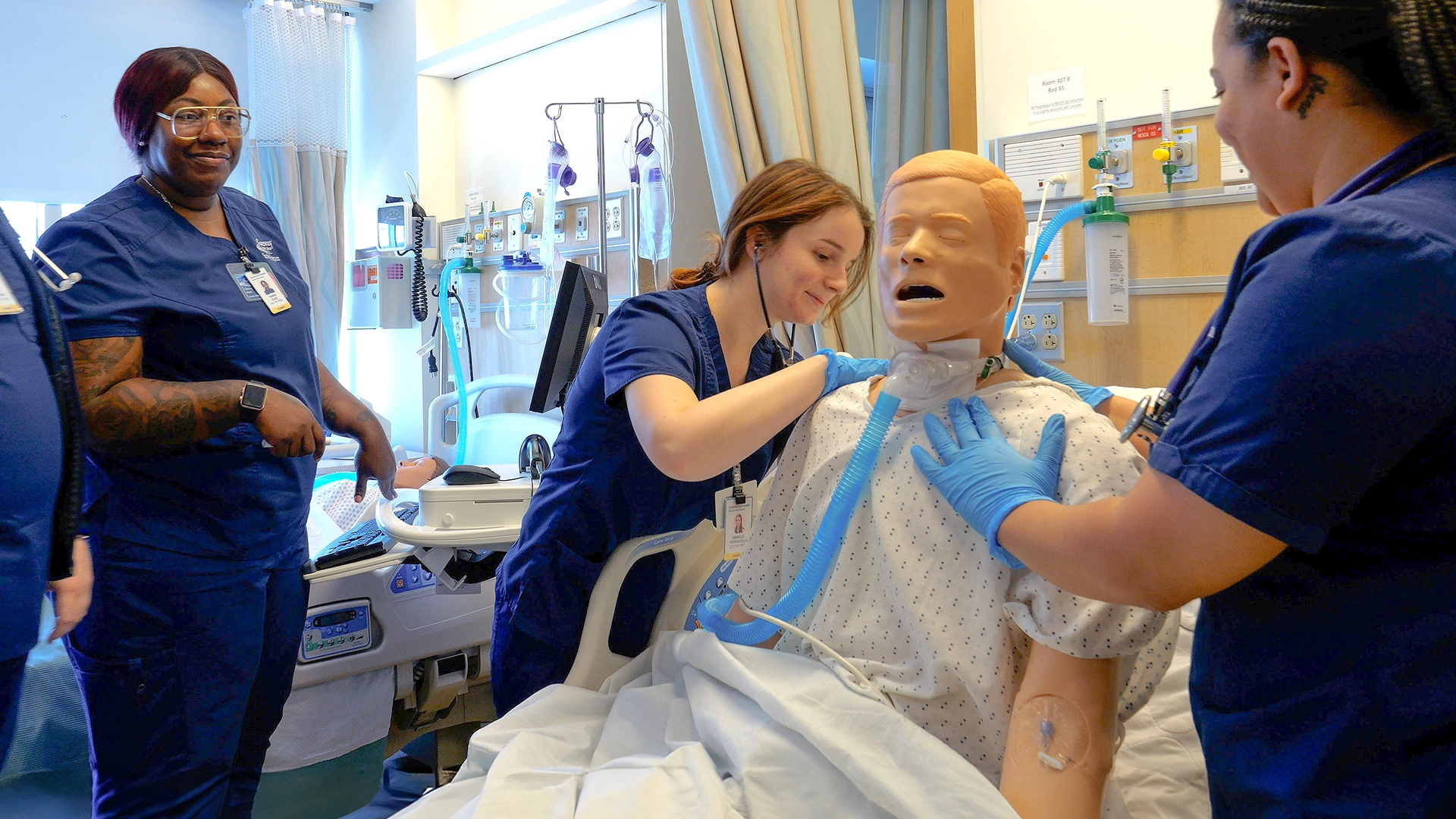Healthcare
- Temp Last Modified: 2025-02-24
More Careers in Healthcare
CT State leads Healthcare education in Connecticut
Healthcare is one of the fastest-growing industries, offering job security, numerous opportunities and excellent earning potential. With so many career paths, you can find a role that suits your interests and lifestyle.

Approximately 90% of CT State nursing graduates find employment in Connecticut within two years of graduating, with an average starting salary of $73,352.

Healthcare Curricula
The healthcare curricula at CT State are designed to align with local, regional, and national healthcare standards and trends. Students gain hands-on learning experiences facilitated by practicing healthcare faculty on high-tech equipment in cutting-edge simulation labs and multiple clinical settings, preparing them for diverse healthcare environments.
Pathways toSuccess
CT State graduate scores consistently exceed the national average on national licensure examinations required to work in their chosen field. Graduates can immediately begin work or transfer their credits to a bachelor’s degree program at one of many colleges, including Eastern Connecticut State University, Central Connecticut State University, Southern Connecticut State University, Western Connecticut State University, Charter Oak State College, Quinnipiac University, Sacred Heart University, and the University of Saint Joseph.
CT State welcomes current LPNs to advance their education toward becoming registered nurses. Eligible LPNs must hold a current license to practice in Connecticut, meet all admission requirements, and submit a nursing program application.
Partnerships with Healthcare Systems
The college collaborates with healthcare systems such as Hartford HealthCare, Yale New Haven Health, UConn Health, Nuvance Health, and the Veterans Health Administration to provide students with comprehensive training and exposure to real-world healthcare scenarios. CT State’s partnerships with area hospitals and other healthcare providers afford the college’s students the opportunity for on-ground, clinical rotations that supplement their classroom work. Supervised by professionals working in the field, CT State’s students can gain valuable on-the-job skills, familiarize themselves with the state’s healthcare systems, and make valuable connections in their discipline.
Application Information
Admissions is selective to many healthcare programs, with additional requirements during the application process. For more specific information on the program and the admissions process, please download the program’s application packet, found on the Selective Admissions webpage.
To learn more about selective admissions healthcare programs, email ctstateselectiveadmissions@ct.edu. Information sessions are held in person and remotely on dates and times in spring and fall.
For those who can’t make a session, virtual appointments can be booked with a member of the Selective Admissions team. All selective admissions healthcare programs maintain national accreditation.

Short-Term Career Training
Learn More About Workforce Development and Continuing Education
- Hits: 42911







